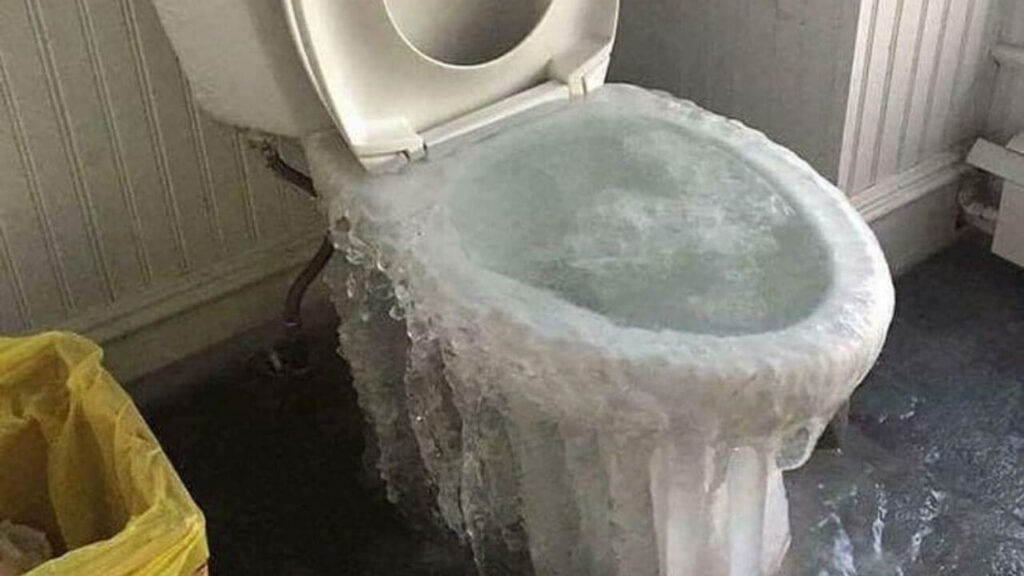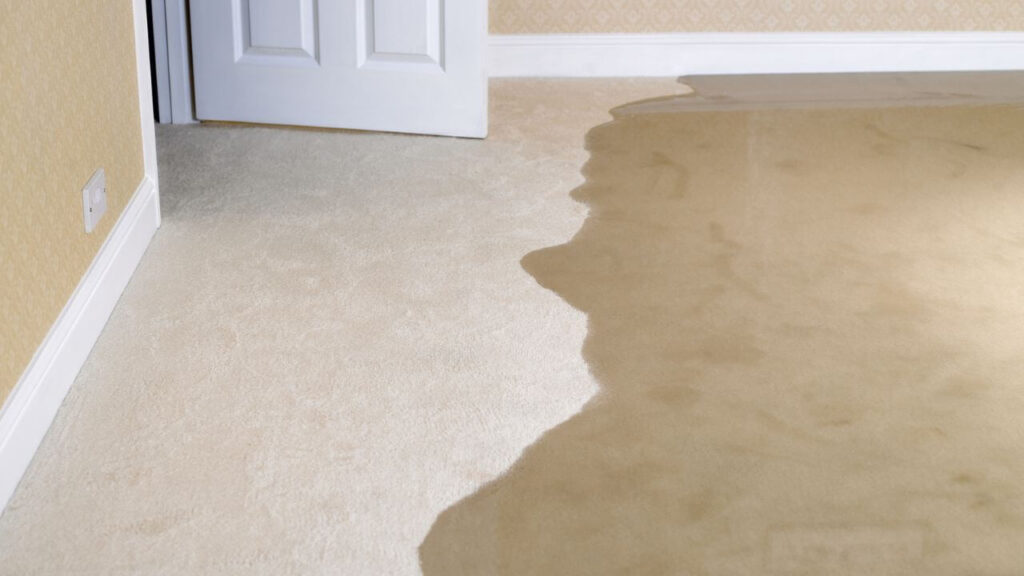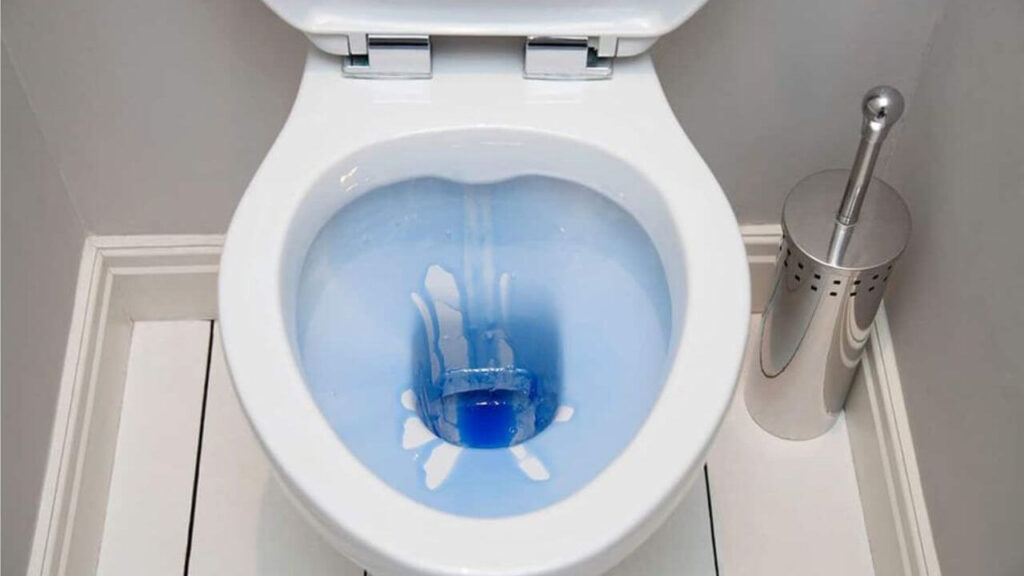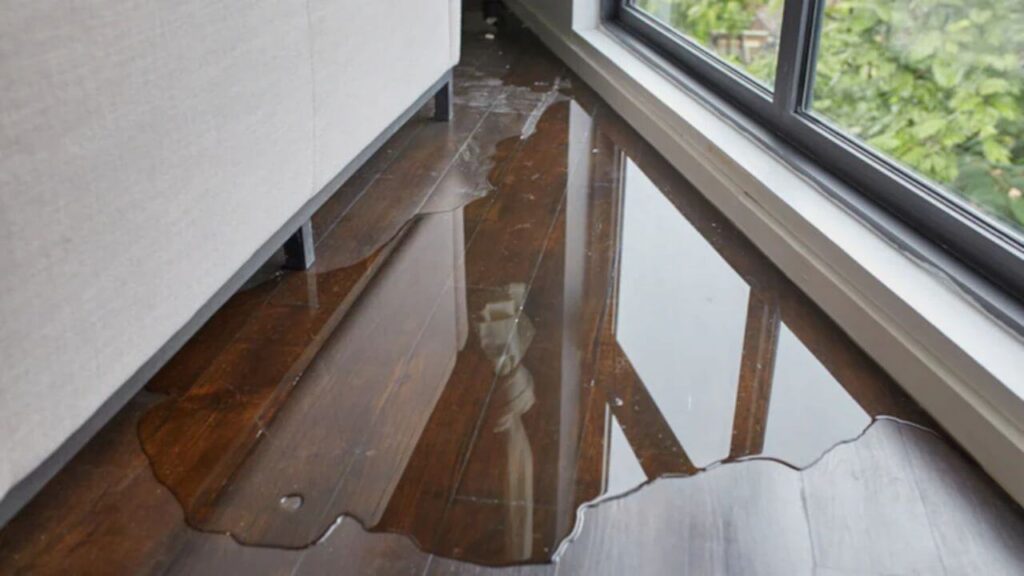Cleaning up a toilet overflow is one of the worst messes you can handle, mainly if it’s caused significant damage.
But, as someone who has had this terrible experience firsthand, I know it’s essential to put safety first and ensure everything is adequately sanitized!
In this blog post, I’ll share my tips for dealing with a toilet overflow and offer several tips for how others can take care of their own sanitation needs after an incident like this.
Whether your bathroom has been flooded in waste or just lightly splashed around, there are some critical steps to ensure complete cleanliness and remediation from whatever drainage issues might have occurred.
So read my advice on how to get yourself out of such an unfortunate messy situation!
How Much Damage Can An Overflowing Toilet Cause?

An overflowing toilet can be a huge mess, and the damage it causes could take some time to fix.
Water can seep into walls and floors if a toilet overflows and even ruin furniture. This water is not clean and carries bacteria which can cause serious health risks if touched or breathed in.
In addition, the dampness created by the water can cause mold to develop, which is also very detrimental to health. Talk about a nightmare!
The lasting effects of an overflowing toilet can make for an expensive fix – one that could have been avoided with regular maintenance or just better pipe management.
Who knew such a common household troublemaker could make such a splash?
Things You Need To Consider While Sanitizing
In the era of Covid-19, sanitizing has become an essential part of our daily lives. We must ensure we are doing it correctly to keep ourselves and others safe.
Consider a few things before, during, and after sanitizing to ensure it is done effectively.
1) Sanitizing Materials
You first need to consider what materials you will use for sanitizing. Different surfaces require different types of cleaning materials.
For example, if you are cleaning glass or glossy surfaces, you should use a mild detergent or glass cleaner.
For hard surfaces such as countertops or floors, use a disinfectant cleaner instead.
Knowing which type of material to use will help ensure that your surfaces have been adequately cleaned and sanitized.
2) Sanitization Time
Another thing to consider is how long you should allow the sanitizer to sit on the surface before wiping it off.
For most products, this time ranges from 30 seconds up to 10 minutes, depending on the manufacturer’s instructions.
Allow enough time for the product to do its job by following these instructions closely when sanitizing any surface in your home or business.
3) Disposal Practices
Finally, after your surfaces have been properly sanitized, dispose of any used materials properly and safely.
This includes wearing protective gloves when handling potentially contaminated items and disposing of them appropriately.
Such as double-bagging them for trash pickup or taking them directly to a hazardous waste disposal facility like the one at your local health department.
Taking these precautions can help ensure that no harmful bacteria remain on your surfaces after cleaning and sanitizing properly.
Also Read:
Can I leave bleach in the toilet overnight
How To Sanitize After Toilet Overflows?

It’s every homeowner’s nightmare: you flush the toilet, only to overflow and leave a mess all over your bathroom.
We’ve all been there, but don’t worry—it’s not as daunting a task as you might think to clean up after an overflowing toilet.
Let’s go over the steps you need to take to sanitize after a toilet overflow.
Step 1: Shut Off Water Supply
The first step is to shut off the water supply valve, usually located behind the toilet. This will stop more water from entering the tank and overflowing onto your bathroom floor.
Step 2: Clean Up Excess Water
Once the water supply has been shut off, it’s time to start cleaning up all that excess water on your bathroom floor. First, use an old towel or mop to soak up as much water as possible.
For tile floors, make sure you get in between each tile with a sponge or cloth. Once most of the water has been soaked up, use a wet/dry vacuum cleaner to finish removing any remaining moisture on the floor.
Step 3: Disinfect The Floor And Toilet Bowl
Now that all the excess water is gone, it’s time to disinfect your floor and toilet bowl with bleach-based cleaning products.
Make sure you wear gloves when dealing with cleaning products containing bleach! Scrub both surfaces until they are visibly clean and free from bacteria and germs. Allow them both to air dry before moving on to Step 4.
Step 4: Replace Damaged Parts Of The Toilet
If your toilet has experienced any damage from the overflow (e.g., broken flapper), then now is the time to replace these parts so that everything works properly again.
If necessary, consult with a local plumber or hardware store employee who can help you find replacement parts for your specific model of toilet.
Ensure everything is installed correctly before turning on the water supply valve again!
Also Read:
How To Use Liquid Fire In Toilet | 3 Simple Steps
How To Sanitize A Carpet When Toilet Overflow On It?
Yeah! I know dealing with a toilet overflow in your home can be extremely daunting. It is a huge mess and can create an unhealthy environment that puts your family at risk of various illnesses.
This is why cleaning and sanitizing the affected area, such as carpets, is essential as soon as possible.
Fortunately, there are easy steps you can take to sanitize your carpet after a toilet overflow properly.
Step 1: Remove Excess Water
The first step in sanitizing your carpet is to remove any excess water. Use towels or mops to absorb as much of the water as possible.
Having access to a wet/dry vacuum will help speed up the process significantly. Once you have removed all the excess water from the carpet, let it air dry for several hours before proceeding to the next step.
Step 2: Disinfect The Carpet
Once your carpet has dried completely, use a disinfectant solution (like bleach) and warm water to clean the affected area.
Make sure you mix enough solution to cover the affected area and do not over-saturate the carpet with too much liquid.
If possible, use a scrub brush or other gentle cleaning tool to ensure that all debris and dirt are removed from deep within the fibers of your carpet.
Let this mixture sit on your carpet for at least 15 minutes before rinsing it with cold water and letting it air dry again.
Step 3: Vacuum The Area Thoroughly
Once your carpet has dried completely, use a vacuum cleaner to remove all dirt particles from within its fibers.
This will ensure that you have removed any potential contaminants before sanitizing the area with bleach or other disinfectants.
Be sure to vacuum both sides of your rug if necessary and dispose of any used vacuum bags properly afterward.
So as not to spread germs or bacteria throughout your home!
Also Read:
How To Disinfect Something That Fell In The Toilet
How To Sanitize The Floor When Toilet Overflow On It?

A toilet overflow is more than just unpleasant; it carries potential health hazards that must be addressed as soon as possible.
Especially when the overflow water makes the floor dirty, too; read on for tips on sanitizing your floor after a toilet overflow.
1) Clean Up The Mess First
Before attempting to sanitize the area, you must first clean up all of the mess. Start by mopping up any remaining water with paper towels or a mop.
Once you have removed as much water as possible, use cleaning products and disinfectants to remove any stains or odors on the floor.
Be sure to wear gloves when handling these products and open windows to ensure that the area is well-ventilated while they are being used.
2) Sanitize The Floor
Once you have removed the visible mess, it is time to sanitize the area. Start by filling a bucket with warm water and a few bleach or disinfectant solution tablespoons.
Use this mixture to scrub down the affected area, particularly where there might have been contacting with bodily fluids or other unsanitary substances.
As you scrub down each section, ensure that you keep your bucket filled with a new solution so that no bacteria or germs remain in the area.
3) Mop Away Residue And Dry The Area
After scrubbing down the affected area, remove any remaining residue from your cleaning solutions with fresh water or an appropriate cleaner (if necessary).
When the mess has been cleaned up and removed from sight, use paper towels or a cloth towel to dry off any remaining moisture to prevent mold growth in damp areas.
Finally, once everything is dehydrated, use air fresheners or other scent-neutralizing agents to help remove any lingering odors in the space.
Also Read:
Can A Toilet Overflow Without Being Clogged
How To Sanitize The Toilet Seat?

Keeping your toilet clean and sanitized is a priority for any household, but it can take time to know where to start.
While most people focus on the bowl, they often forget about the seat! Here are three easy steps to help you keep your toilet seat clean and sanitized.
Step 1: Disinfect with Vinegar
Vinegar is an excellent natural disinfectant that is both non-toxic and inexpensive.
Take a spray bottle filled with equal parts water and vinegar, spray the entire toilet seat surface.
Then use a damp cloth or sponge to wipe away any dirt or dust before wiping down the surface with a dry cloth.
This should remove any bacteria from the surface of the seat without harsh chemicals.
Step 2: Clean with Baking Soda
Baking soda is an excellent cleaner that can help remove grime and soap scum from surfaces.
For example, to clean your toilet seat using baking soda, mix one baking soda and two water in a bowl until you have a paste-like consistency.
Apply it to the toilet seat using a soft cloth or sponge, let it sit for 10-15 minutes.
Then scrub off with another damp cloth or sponge before wiping away all excess moisture with a dry cloth.
Step 3: Rinse Thoroughly
Once you’ve used vinegar and baking soda on your toilet seat, it’s essential to give it one more rinse to make sure all chemical residue has been removed from the surface.
Fill your spray bottle again with equal parts water and vinegar (or just plain water), and give your toilet seat one last spray before wiping away all moisture using a dry cloth or paper towel.
Also Read:
Can a Bad Flapper Cause a Toilet To Overflow
How To Sanitize The Hardwood Floor When Toilet Overflow On It?

We’ve got you covered with tips and tricks on sanitizing the hardwood floor after a toilet overflow.
Step 1: Soak Up the Excess Water
The first step is to get rid of as much water as possible. You want to use a mop or rag that you don’t mind potentially throwing away afterward, as it will likely be soaked with bacteria-laden bathroom water.
You can also wet vac any remaining liquid off the floor if necessary.
Once you’ve soaked up most of the excess water, it’s essential to disinfect the area and get rid of any lingering germs and bacteria.
Step 2: Disinfect The Area
It would help if you used a bleach-based cleaner for this job.
Bleach is one of the few cleaning products powerful enough to kill germs and bacteria in and around your bathroom.
So first, make sure that you cover every inch of your hardwood floor with bleach-based cleaner.
Even if you think that the toilet overflow has spared an area! Then, let it sit for at least 10 minutes before wiping it down or rinsing away.
It’s also important to remember that using too much bleach may damage your floors over time, so make sure not to go overboard when applying it!
Step 3: Dry The Floor Thoroughly
After you have wiped down or rinsed away all traces of the bleach-based cleaner, ensure that you take extra care when drying the area completely!
Moisture left behind can cause mold and mildew growth in less than 48 hours.
So every single bit of moisture must be dried up completely before moving on from here!
You could also use a fan or dehumidifier to help dry out any hidden moisture spots faster!
Bottom Line
Let’s hope you never have to deal with a toilet overflow, but if you do – now you know how to clean it up like a pro!
Always wear gloves and a mask when handling sewage water, and be extra careful not to splash any on yourself.
If cleaning up after an overflowed toilet grosses you, don’t worry – there are professional cleaners who can handle it for you. Just give them a call, and they’ll take care of everything!
